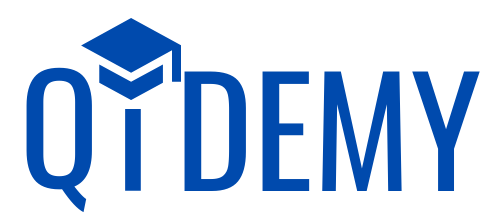In today’s highly competitive business environment, companies are constantly striving to improve their operations and stay ahead of the curve. One way to achieve this is through the implementation of Total Productive Maintenance (TPM) and Kaizen. TPM is a maintenance strategy that aims to achieve zero downtime, zero defects, and zero accidents, while Kaizen is a continuous improvement approach that focuses on small, incremental improvements to processes and systems.
Together, these two methodologies can help organizations achieve significant improvements in productivity, quality, and safety.
In this blog post, we will explore the role of Kaizen in TPM and discuss best practices for leveraging Kaizen to take your TPM program from good to great.
We will examine the benefits of Kaizen in TPM, and the implementation process.
Finally, we will provide recommendations for how you can start implementing Kaizen in your own TPM program and take your operations to the next level. So let’s dive in!
Table of Contents
The Role of Kaizen in TPM
Definition of Kaizen
Kaizen is a Japanese term that translates to “continuous improvement”. It is a philosophy that involves making small, incremental improvements to processes and systems in order to achieve greater efficiency, productivity, and quality.
Benefits of Kaizen in TPM
#1 Continuous improvement
By implementing Kaizen, organizations can achieve a culture of continuous improvement, where employees are constantly looking for ways to improve processes and systems. This can lead to a sustained improvement in productivity and efficiency over time.
#2 Employee involvement
Kaizen is a bottom-up approach to improvement that encourages employees at all levels of the organization to contribute ideas and suggestions for improvement. This can lead to greater employee engagement, motivation, and job satisfaction.
#3 Cost reduction
By improving processes and systems, organizations can reduce waste and eliminate unnecessary activities, leading to cost savings.
#4 Improved productivity
Kaizen can help organizations achieve greater productivity by streamlining processes, reducing bottlenecks, and improving workflow.
Kaizen implementation process in TPM
Step 1 : Identifying opportunities for improvement
The first step in implementing Kaizen in TPM is to identify areas where improvements can be made. This can be done through employee suggestions, process analysis, or performance data.
Step 2 : Prioritizing improvement activities
Once improvement opportunities have been identified, they need to be prioritized based on their potential impact and feasibility of implementation.
Step 3 : Developing and implementing action plans
Once improvement activities have been prioritized, action plans need to be developed to implement the improvements. This may involve process redesign, training, or the implementation of new technologies.
Step 4 : Measuring and monitoring improvement results
Finally, it is important to measure and monitor the results of the improvements to ensure that they are achieving the desired outcomes. This may involve the collection of performance data, feedback from employees, or customer satisfaction surveys.
Best Practices for Leveraging Kaizen in TPM
A. Engage employees in Kaizen activities
- Training and education: Provide training and education to employees on the Kaizen philosophy and tools. This will help to build a shared understanding of the approach and ensure that everyone is equipped to contribute to improvement activities.
- Incentives and rewards: Offer incentives and rewards to employees who contribute ideas and suggestions for improvement. This can help to foster a culture of continuous improvement and encourage greater employee engagement.
B. Foster a culture of continuous improvement
- Encourage innovation and creativity: Create an environment that encourages innovation and creativity. This can be done by providing opportunities for brainstorming and experimentation, and by recognizing and celebrating new ideas.
- Celebrate success and learn from failures: Celebrate successes and share best practices with the organization. At the same time, encourage a culture of learning from failures, where mistakes are seen as opportunities for improvement rather than reasons for blame.
C. Use data to drive decision-making
- Collect and analyze performance data: Collect and analyze data on equipment performance, process efficiency, and quality metrics. This will help to identify areas where improvements can be made and measure the impact of Kaizen activities.
- Use data to identify improvement opportunities: Use data to identify improvement opportunities and prioritize improvement activities. This will help to ensure that resources are focused on areas where they can have the greatest impact.
- Monitor and measure improvement results: It is important to monitor and measure the results of improvement activities. This can help to identify areas where further improvements can be made, and ensure that the organization is achieving its goals for efficiency, productivity, and quality.
In conclusion, leveraging Kaizen in TPM can help organizations move from good to great by fostering a culture of continuous improvement and driving efficiency, productivity, and quality.
By engaging employees in Kaizen activities, fostering a culture of innovation and creativity, and using data to drive decision-making, organizations can achieve significant improvements in their operations.
Organizations that embrace Kaizen in their TPM programs can expect to see improved performance and a competitive advantage in their industry.
Therefore, we recommend that readers start implementing Kaizen in their own TPM programs to drive their organization’s success.
Additional Resource
- Lean Enterprise Institute – Kaizen: https://www.lean.org/lexicon/kaizen This website provides a comprehensive overview of kaizen, including its principles, history, and applications.
- iSixSigma – 12 Principles of Kaizen: https://www.isixsigma.com/methodology/kaizen/12-principles-of-kaizen/ This website provides a brief summary of each of the 12 principles of kaizen, along with some tips on how to apply them.
- BusinessDictionary – Kaizen Principles: https://www.businessdictionary.com/definition/kaizen-principles.html This website provides a definition of the kaizen principles, along with some examples of how they can be applied in a business setting.
- Process Excellence Network – The 12 Principles of Kaizen: https://www.processexcellencenetwork.com/lean-six-sigma-business-transformation/articles/the-12-principles-of-kaizen This website provides a detailed explanation of each of the 12 principles of kaizen, along with some examples of how they can be implemented.
- Kaizen Institute – 12 Principles of Kaizen: https://us.kaizen.com/about-us/kaizen-philosophy/12-principles-of-kaizen.html This website provides an overview of the 12 principles of kaizen, along with some examples of how they can be applied in different industries.




